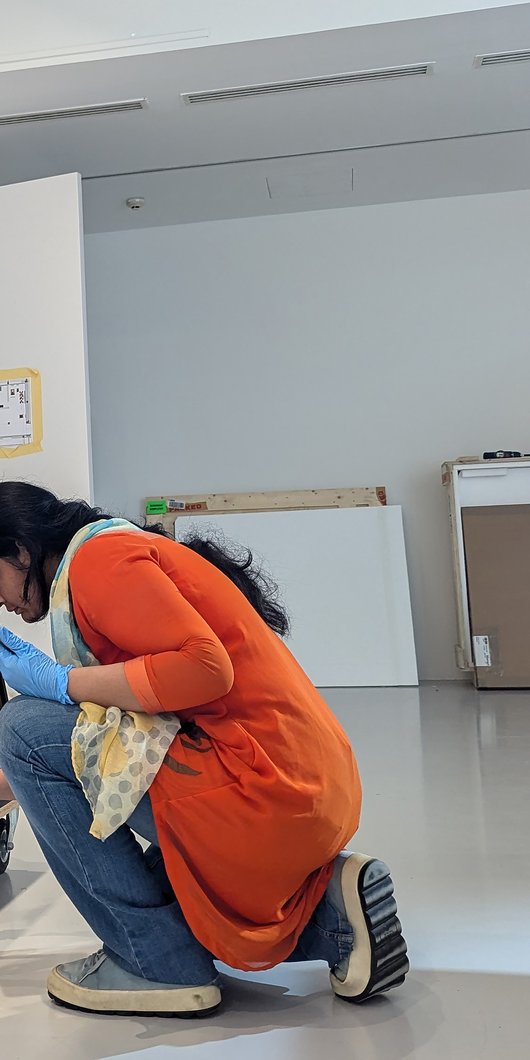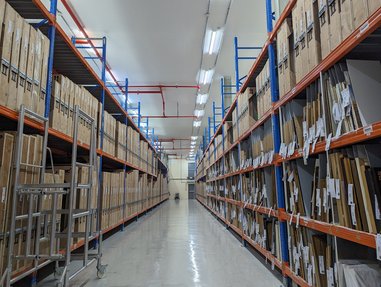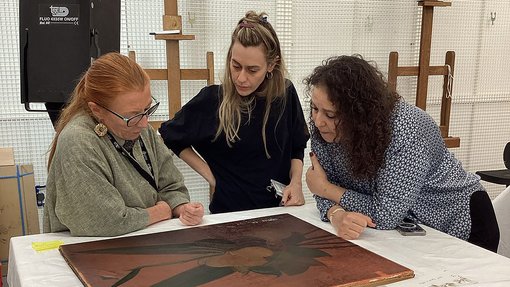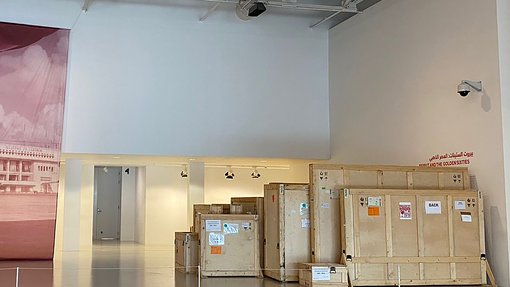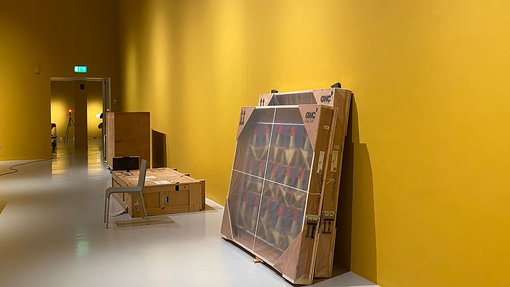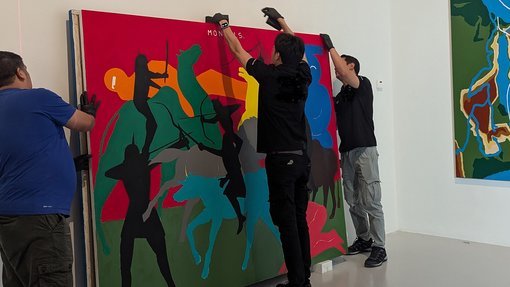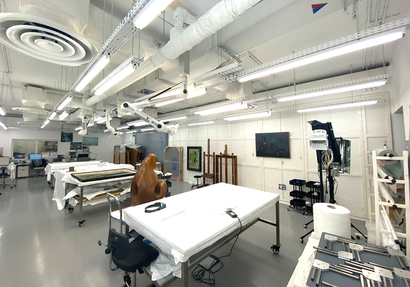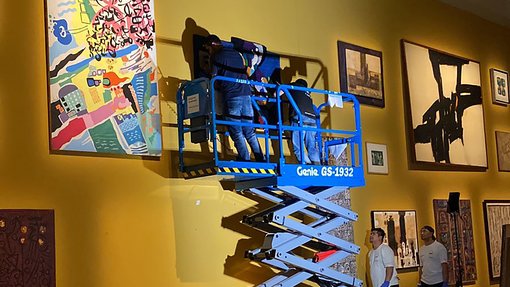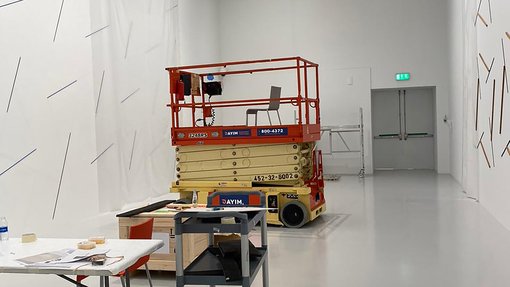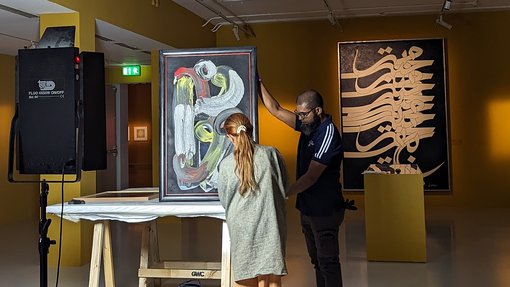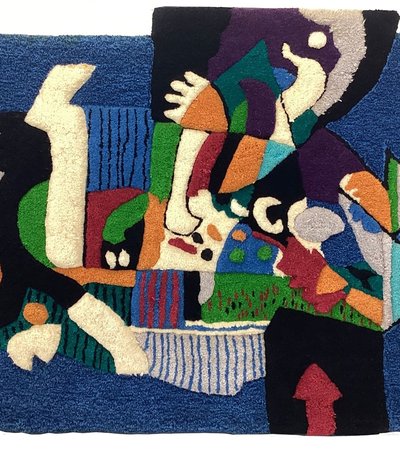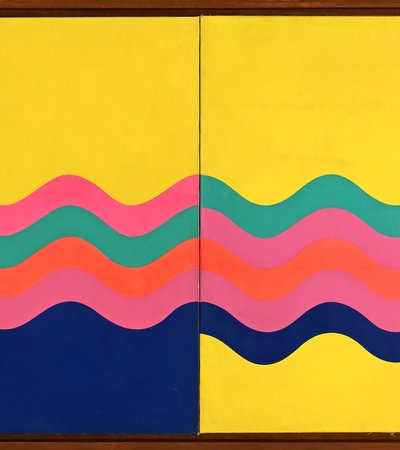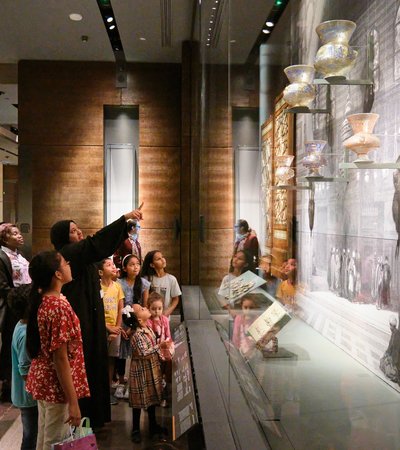At Mathaf, the journey of an artwork is a carefully orchestrated process, ensuring that each piece, whether newly acquired, commissioned, donated, or loaned, is preserved and presented to the public in the best possible condition.
Quarantine and Storage
When newly acquired artworks arrive at Mathaf, they are first sent to an offsite storage area. Here, they are placed in a temporary isolation room, known as the quarantine room. This is because materials used in artwork packaging and crating, like wood, can attract pests or mould.
If an infested work enters a museum's storage, for example, insects can rapidly spread to nearby materials – particularly organic ones such as wood, textiles, paper, leather, and natural fibers. This can lead to irreversible damage, including holes, staining, and the overall structural weakening of affected artworks.
Therefore, artworks remain in this offsite holding area and are only introduced to the rest of the collection after the museum’s conservation team has checked the condition of each piece.
